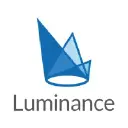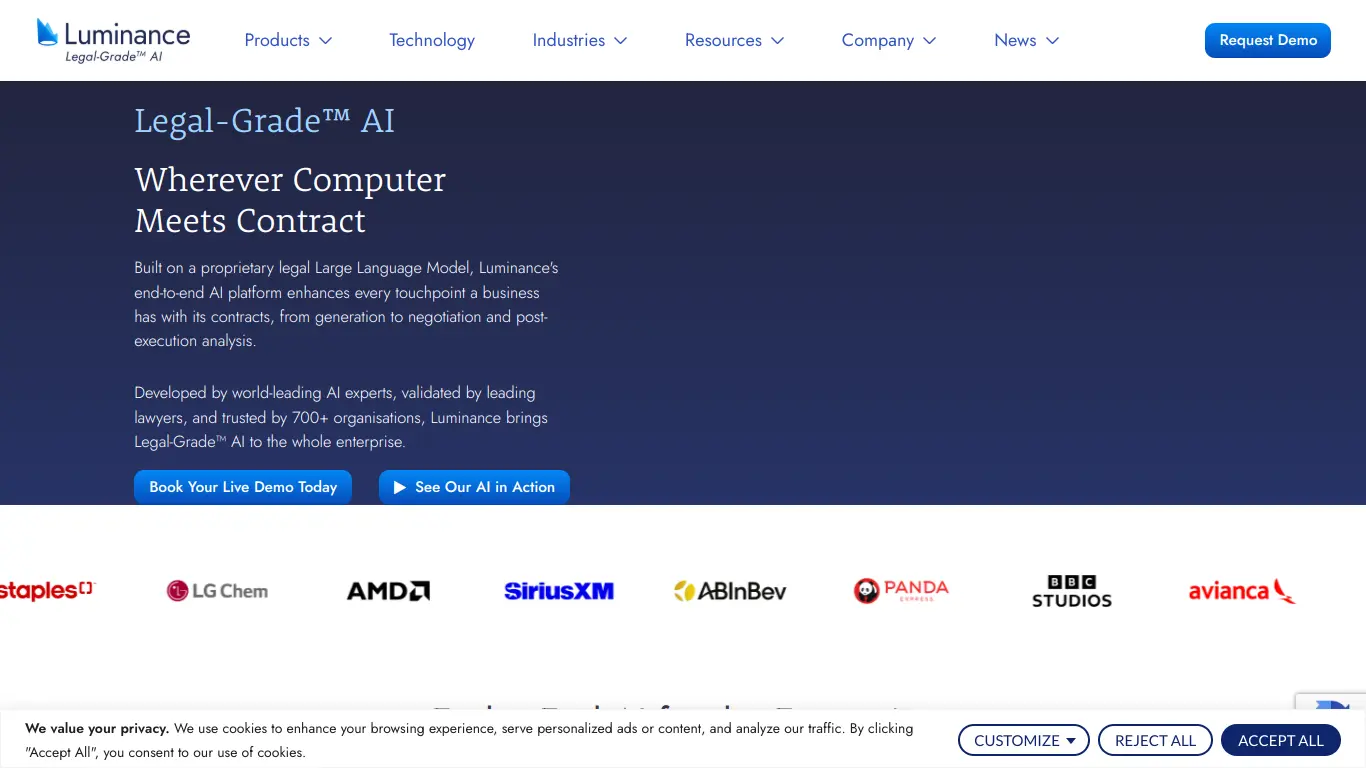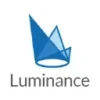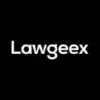Luminance uses AI to transform legal document review, analyzing contracts in 80+ languages to save time and reduce risk for legal teams.
In the complex world of legal documents and contracts, staying on top of due diligence, compliance, and risk assessment can feel like drinking from a firehose. Legal professionals often find themselves drowning in paperwork, struggling to extract meaningful insights from dense legal text. If you’ve ever spent hours poring over contracts looking for critical clauses or compliance issues, you know the mental fatigue and anxiety that comes with potentially missing something important. That’s where AI-powered legal technology like Luminance comes in – promising to transform how legal teams handle document review and analysis.
Introduction to Luminance
What is Luminance and its Purpose?
Luminance is an advanced artificial intelligence platform specifically designed for the legal industry. At its core, Luminance uses a combination of machine learning and pattern recognition technologies to read, understand, and analyze legal documents across multiple languages. Unlike basic keyword search tools, Luminance employs proprietary LITE (Legal Inference Transformation Engine) technology that understands legal concepts rather than just matching words.
The primary purpose of Luminance is to dramatically accelerate document review processes while improving accuracy and reducing risk. The platform identifies anomalies, highlights potential issues, and helps legal professionals make more informed decisions about contracts, compliance matters, and due diligence processes.
Who is Luminance Designed For?
Luminance has been crafted with several key professional groups in mind:
- Law Firms: From global firms to regional practices, Luminance helps lawyers conduct more efficient document reviews, due diligence, and compliance checks.
- Corporate Legal Departments: In-house counsel use Luminance to manage contract portfolios, identify risks, and ensure regulatory compliance.
- Legal Service Providers: Organizations offering specialized legal services leverage Luminance to deliver faster, more comprehensive document analysis.
- Financial Institutions: Banks and investment firms use the platform during mergers, acquisitions, and regulatory compliance activities.
- Regulatory Bodies: Some regulatory agencies employ Luminance to assist with investigations and compliance monitoring.
While primarily targeting legal professionals, Luminance has relevance for any organization dealing with large volumes of contracts or legal documents that require thorough analysis.
Getting Started with Luminance: How to Use It
Getting started with Luminance involves a streamlined onboarding process:
- Initial Consultation: Luminance customarily begins with a consultation to understand your specific needs and use cases.
- Platform Deployment: The software can be deployed via secure cloud or on-premises installation, depending on your organization’s security requirements.
- Document Upload: Users can upload documents in virtually any format, including PDFs, Word documents, and scanned files.
- Initial Processing: Luminance’s AI automatically processes documents, identifying clauses, parties, dates, obligations, and other key information.
- Training and Support: Luminance provides comprehensive training sessions to help teams maximize the platform’s capabilities.
- Ongoing Use: As users interact with the system, Luminance’s machine learning capabilities allow it to improve over time, adapting to your specific document types and legal concerns.
The platform is designed to be intuitive, with a minimal learning curve for legal professionals. Most users can begin analyzing documents effectively after just a few hours of training.
Luminance’s Key Features and Benefits
Core Functionalities of Luminance
Luminance offers a comprehensive suite of functionality designed to transform legal workflows:
1. Due Diligence Module
- Automatically categorizes documents by type
- Identifies key clauses and their variations across document sets
- Flags anomalies and unusual provisions
- Enables side-by-side comparison of similar clauses
2. Contract Analysis Tools
- Extracts critical information like parties, dates, values, and obligations
- Identifies missing clauses and potential compliance issues
- Enables batch analysis of multiple contracts simultaneously
- Creates customizable reports highlighting risks and opportunities
3. Multilingual Capabilities
- Understands and processes documents in 80+ languages
- Maintains conceptual understanding across languages
- Enables cross-language comparison of similar provisions
4. AI-Powered Search
- Goes beyond keywords to understand legal concepts
- Semantic search capabilities identify relevant clauses even when terminology differs
- Advanced filtering to focus on specific document types, date ranges, or parties
5. Compliance Workflows
- Identifies regulatory issues across contract portfolios
- Tracks changes in compliance status over time
- Creates compliance risk heatmaps and exception reports
Advantages of Using Luminance
Implementing Luminance offers numerous significant benefits:
⏱️ Time Efficiency
- Reduces document review time by up to 90%
- Accelerates due diligence processes from weeks to days
- Enables real-time analysis of new documents as they arrive
💰 Cost Reduction
- Decreases billable hours spent on routine document review
- Minimizes the need for large review teams
- Reduces costs associated with missed contractual obligations
🛡️ Risk Mitigation
- Identifies problematic clauses human reviewers might miss
- Ensures consistent analysis across all documents
- Creates audit trails of document review processes
📊 Enhanced Insights
- Provides deeper understanding of contractual relationships
- Identifies patterns across document sets
- Enables data-driven decision making about legal risks
🔄 Adaptability
- Learns from user interactions to improve over time
- Adjusts to organization-specific terminology and concerns
- Accommodates diverse document types and formats
According to a study by Luminance, clients typically report a 50-90% reduction in the time required for document review tasks when using the platform.
Main Use Cases and Applications
Luminance’s versatility enables it to address numerous legal challenges:
- M&A Due Diligence
- Rapidly analyze target company contracts
- Identify change of control provisions and potential obstacles
- Compare terms across multiple jurisdictions
- Contract Management
- Maintain comprehensive visibility across contract portfolios
- Track renewal dates and key obligations
- Identify optimization opportunities in standard terms
- Regulatory Compliance
- Assess contracts against changing regulations (like GDPR, LIBOR transition)
- Identify non-compliant provisions at scale
- Create compliance roadmaps for remediation
- Litigation Preparation
- Analyze discovery documents for relevant information
- Identify patterns and inconsistencies
- Build stronger case strategies based on comprehensive document analysis
- Real Estate Portfolio Review
- Analyze lease agreements across properties
- Identify favorable and unfavorable terms
- Track critical dates and obligations
- Intellectual Property Review
- Identify IP provisions across contract portfolios
- Assess licensing rights and restrictions
- Manage patent and trademark documentation
Exploring Luminance’s Platform and Interface
User Interface and User Experience
Luminance has invested significantly in creating an intuitive, user-friendly interface that requires minimal training for legal professionals. The platform’s UI features:
Visual Document Navigation
The interface organizes documents visually, with color-coding to indicate document types, risk levels, and review status. This allows users to quickly identify where attention is needed most.
Interactive Dashboards
Custom dashboards provide real-time analytics on document review progress, highlighting completion rates, identified issues, and team performance metrics.
Clause Visualization
Luminance visualizes how clauses compare across documents with heat maps and graphical representations, making it easier to spot outliers and variations.
Collaboration Tools
The platform incorporates annotation capabilities, shared workspaces, and task management features that facilitate teamwork on large document review projects.
Customizable Workflows
Users can tailor the interface to match their specific review processes, creating custom tagging systems, approval workflows, and reporting templates.
The overall user experience emphasizes reducing cognitive load through thoughtful information presentation. Rather than overwhelming users with data, Luminance presents insights contextually, surfacing the most relevant information based on the user’s current task.
Platform Accessibility
Luminance prioritizes accessibility in several key dimensions:
Technical Accessibility
- Cloud-based deployment option for access from any location
- On-premises option for organizations with strict security requirements
- Mobile-responsive interface for reviewing on tablets and smartphones
- API connectivity for integration with existing document management systems
Learning Accessibility
- Intuitive design reduces training requirements
- Comprehensive onboarding program for new users
- Extensive documentation and help resources
- Regular webinars and training sessions for ongoing education
Language Accessibility
- Support for 80+ languages enables global teams to collaborate
- Interface available in multiple languages
- Document translation capabilities to bridge language barriers
Security Features
- Role-based access controls
- Detailed audit trails of all user actions
- Data encryption both in transit and at rest
- Compliance with major security standards including ISO 27001
Luminance Pricing and Plans
Subscription Options
Luminance operates on a subscription model with pricing customized to each organization’s specific needs and usage requirements. While the company doesn’t publish standard pricing on its website, the subscription structure typically includes:
Basic Tier
- Core document analysis capabilities
- Limited document volume
- Standard support package
- Basic reporting functionality
Professional Tier
- Enhanced analysis capabilities
- Increased document volume
- Priority support
- Advanced reporting and analytics
- Collaboration features for teams
Enterprise Tier
- Unlimited document analysis
- Full feature access across all modules
- Premium support with dedicated account manager
- Custom integration options
- Advanced security features
- On-premises deployment option
Pricing factors typically include:
- Number of users
- Document volume
- Deployment method (cloud vs. on-premises)
- Required modules (Due Diligence, Contract Analysis, etc.)
- Contract duration (annual vs. multi-year)
Organizations interested in Luminance should contact their sales team directly for a customized quote based on their specific requirements.
Free vs. Paid Features
Luminance does not offer a permanent free tier, but they do provide:
Free Demo/Trial
- Limited-time access to full platform capabilities
- Sample document analysis
- Guided walkthrough of key features
- Consultation with Luminance experts
Paid Features by Module
| Module | Basic Tier | Professional Tier | Enterprise Tier |
|---|---|---|---|
| Document Analysis | ✅ Basic analysis | ✅ Advanced analysis | ✅ Comprehensive analysis |
| Languages | ✅ Limited languages | ✅ 40+ languages | ✅ 80+ languages |
| User Accounts | ✅ Limited users | ✅ Team access | ✅ Unlimited users |
| API Access | ❌ Not available | ✅ Limited access | ✅ Full access |
| Custom Training | ❌ Standard training only | ✅ Some customization | ✅ Fully customized |
| Deployment Options | ✅ Cloud only | ✅ Cloud only | ✅ Cloud or on-premises |
| Support Level | ✅ Standard | ✅ Priority | ✅ Premium with dedicated manager |
Luminance Reviews and User Feedback
Pros and Cons of Luminance
Based on user reviews and industry analysis, here’s how Luminance stacks up:
Pros:
- 🔍 Superior pattern recognition technology that truly understands legal concepts
- 🚀 Significant time savings in document review processes
- 🌐 Exceptional multilingual capabilities compared to competitors
- 📈 Continuous improvement through machine learning
- 🤝 Strong collaboration features for team-based review
- 🔒 Robust security features that meet stringent legal requirements
Cons:
- 💰 Higher price point than some competitors
- 📚 Learning curve for advanced features
- 🔧 Some customization requires technical expertise
- 📱 Mobile experience not as robust as desktop
- 🔌 Integration with some legacy systems can be challenging
- 📊 Some users report wanting more customizable reporting options
User Testimonials and Opinions
From Law Firms:
“Luminance has transformed our due diligence process. What used to take weeks now takes days, and we’re finding issues we would have missed with manual review.”
— Partner at Global Law Firm
“The ROI was almost immediate. We’ve reduced our document review time by 70% while increasing our confidence in the thoroughness of our analysis.”
— Legal Technology Director, Mid-size Law Firm
From Corporate Legal Departments:
“Implementing Luminance allowed us to bring more work in-house rather than outsourcing document review, resulting in substantial cost savings.”
— General Counsel, Fortune 500 Company
“The pattern recognition capabilities are impressive. Luminance identified inconsistencies across our contract portfolio that had been overlooked for years.”
— Legal Operations Manager, Technology Company
Industry Recognition:
Luminance has received numerous awards and recognitions, including:
- 🏆 “AI Product of the Year” at the British Legal Technology Awards
- 🏆 “Best Use of AI” at the Legal Innovation Awards
- 🏆 Listed in the Forbes AI 50 list of most promising AI companies
Luminance Company and Background Information
About the Company Behind Luminance
Luminance was founded in 2015 as a collaboration between mathematicians and lawyers from the University of Cambridge. The company’s core technology was developed based on research from the university’s computer science department, focusing on machine learning and pattern recognition techniques.
Key Company Milestones:
- 2015: Founded in Cambridge, UK
- 2016: Secured $3 million seed funding
- 2017: Expanded to international markets
- 2018: Raised $10 million Series A funding
- 2019: Reached 150+ customers across 40+ countries
- 2020: Expanded product offerings beyond due diligence
- 2021: Surpassed 300 customers in 55+ countries
- 2022: Continued global expansion and product development
Leadership Team:
Luminance is led by a team with backgrounds spanning legal technology, artificial intelligence, and legal practice. The team includes former law firm partners, AI researchers, and technology entrepreneurs committed to transforming legal work through technology.
Company Values:
Luminance emphasizes innovation, accuracy, security, and accessibility as core values. The company maintains close relationships with the legal community to ensure its technology addresses genuine pain points in legal practice.
Global Presence:
Headquartered in London, Luminance maintains offices in Cambridge, New York, Singapore, and other global locations to support its worldwide customer base.
Luminance Alternatives and Competitors
Top Luminance Alternatives in the Market
Several other AI-powered legal technology solutions compete with Luminance in various aspects:
- Kira Systems (https://kirasystems.com/)
- Strong focus on contract analysis and due diligence
- Well-established presence in the legal market
- Extensive pre-built provision models
- DISCO (https://www.csdisco.com/)
- Combines e-discovery and document review capabilities
- Strong litigation focus
- Cloud-native architecture
- Seal Software (now part of DocuSign) (https://www.docusign.com/products/insight)
- Specialized in contract discovery and analytics
- Strong integration with DocuSign’s broader contract ecosystem
- Focus on procurement and sales contracts
- LawGeex (https://www.lawgeex.com/)
- Emphasis on contract review automation
- Pre-execution contract review focus
- Strong in comparing contracts against predefined policies
- ThoughtRiver (https://www.thoughtriver.com/)
- Contract pre-screening automation
- Risk scoring system for contracts
- Integration with Microsoft ecosystem
Luminance vs. Competitors: A Comparative Analysis
| Feature | Luminance | Kira Systems | DISCO | Seal Software | LawGeex |
|---|---|---|---|---|---|
| Core Strength | Pattern recognition | Provision extraction | E-discovery | Contract analytics | Pre-execution review |
| Languages | 80+ | 40+ | 50+ | 40+ | 26+ |
| Deployment | Cloud or on-premises | Cloud or on-premises | Cloud | Cloud or on-premises | Cloud |
| ML Approach | Unsupervised + supervised | Primarily supervised | Supervised | Supervised | Supervised |
| UI Complexity | Moderate | Moderate | Low | High | Low |
| Pricing Model | Subscription | Subscription | Subscription | Subscription | Subscription |
| Target Users | Law firms & corporations | Law firms & corporations | Litigation teams | Procurement & legal | In-house legal |
Key Differentiators for Luminance:
- LITE Technology: Luminance’s proprietary Legal Inference Transformation Engine uses a combination of supervised and unsupervised machine learning, allowing it to identify patterns without extensive training.
- Language Capabilities: With support for over 80 languages, Luminance exceeds most competitors in multilingual document analysis.
- Visual Analytics: Luminance’s visualization tools provide more intuitive ways to understand document sets than many competitors offer.
- Adoption by Magic Circle Firms: Luminance has achieved strong penetration among elite global law firms, indicating its effectiveness for sophisticated legal work.
- Less Training Required: Luminance’s unsupervised learning approach means it requires less initial training than some competitors that rely heavily on pre-built models.
When selecting between Luminance and alternatives, organizations should consider their specific use cases, document types, language requirements, and integration needs.
Luminance Website Traffic and Analytics
Website Visit Over Time
Luminance’s website (www.luminance.com) has shown steady growth in traffic over recent years, reflecting increasing interest in legal AI technologies. While exact figures aren’t publicly disclosed, industry analysis suggests:
- Monthly Visitors: Approximately 30,000-50,000 unique visitors
- Traffic Growth: ~15-20% year-over-year increase
- Page Views: Average of 3-4 pages per visit
- Visit Duration: Average of 2-3 minutes per session
The website typically sees traffic spikes corresponding with product announcements, industry events, and published case studies.
Geographical Distribution of Users
Luminance’s website attracts a global audience, reflecting its international customer base:
📊 Regional Traffic Distribution:
- North America: ~35%
- Europe: ~40%
- Asia-Pacific: ~15%
- Rest of World: ~10%
The United Kingdom, United States, Singapore, Australia, and Germany represent the top five countries by visitor volume, aligning with regions where legal AI adoption is most advanced.
Main Traffic Sources
Luminance’s web traffic comes from diverse channels:
📈 Traffic Source Breakdown:
- Organic Search: ~45% (indicating strong SEO performance)
- Direct Traffic: ~25% (showing brand recognition)
- Referral Traffic: ~15% (from legal publications and partner websites)
- Social Media: ~10% (primarily LinkedIn and Twitter)
- Paid Search/Display: ~5%
The high proportion of organic and direct traffic suggests Luminance has established strong brand recognition within the legal technology sector.
Frequently Asked Questions about Luminance (FAQs)
General Questions about Luminance
Q: What makes Luminance different from traditional document review tools?
A: Unlike traditional tools that rely on keyword searching, Luminance uses advanced pattern recognition and machine learning to understand legal concepts and language. It can identify anomalies, patterns, and relationships between documents without being explicitly programmed to look for specific terms.
Q: Is Luminance suitable for small law firms or only large organizations?
A: While Luminance is used by many large global firms, it offers solutions scaled for smaller practices as well. The technology can deliver value for any organization dealing with significant document volumes or complex contracts, regardless of size.
Q: How secure is Luminance for handling confidential legal documents?
A: Luminance employs bank-grade security measures including encryption, secure data centers, role-based access controls, and comprehensive audit trails. The system complies with major security standards and can be deployed on-premises for organizations with heightened security requirements.
Feature Specific Questions
Q: How many languages does Luminance support?
A: Luminance supports over 80 languages, including all major European and Asian languages. The system can analyze documents in multiple languages simultaneously and identify conceptual similarities across different language documents.
Q: Does Luminance require extensive training before it can analyze documents effectively?
A: No. Luminance’s unsupervised machine learning approach means it can begin analyzing documents immediately without extensive training. The system becomes more effective as users interact with it, but delivers value from day one.
Q: Can Luminance integrate with our existing document management system?
A: Yes. Luminance offers APIs and integration capabilities to connect with major document management systems, e-discovery platforms, and enterprise software. The specific integration approach depends on your existing systems.
Pricing and Subscription FAQs
Q: Does Luminance offer a free trial?
A: Luminance typically offers demonstrations and proof-of-concept implementations rather than self-service free trials. These are customized to your organization’s specific needs and document types.
Q: How is Luminance priced?
A: Luminance uses a subscription model with pricing based on factors including user numbers, document volumes, required modules, and deployment method. Contact Luminance directly for a customized quote.
Q: Can we scale our Luminance subscription up or down based on needs?
A: Yes. Luminance offers flexible subscription options that can be adjusted as your needs change, such as during periods of high M&A activity or major litigation.
Support and Help FAQs
Q: What kind of training and support does Luminance provide?
A: Luminance offers comprehensive onboarding, training sessions, documentation, and ongoing support. Enterprise customers typically receive dedicated account managers and priority support.
Q: Is technical expertise required to administer Luminance?
A: Basic administration can be handled by non-technical users. More advanced customization might require IT support, though Luminance’s professional services team can assist with complex implementations.
Q: How frequently is Luminance updated with new features?
A: Luminance typically releases updates quarterly, with minor improvements and bug fixes deployed more frequently. All cloud customers receive updates automatically.
Conclusion: Is Luminance Worth It?
Summary of Luminance’s Strengths and Weaknesses
Key Strengths:
✅ Powerful AI Technology: Luminance’s LITE engine represents some of the most advanced pattern recognition technology in the legal tech market.
✅ Time Efficiency: Customers consistently report 50-90% time savings on document review tasks.
✅ Multilingual Capabilities: With 80+ supported languages, Luminance excels in international and cross-border matters.
✅ Intuitive Visual Interface: The platform presents complex document analysis in easily digestible visual formats.
✅ Minimal Training Requirements: Luminance’s unsupervised learning approach means faster implementation and less upfront configuration.
✅ Strong Security: Enterprise-grade security features meet the demanding requirements of legal and financial institutions.
Key Weaknesses:
❌ Price Point: Luminance represents a significant investment, potentially putting it out of reach for smaller organizations.
❌ Advanced Feature Complexity: Some of the more powerful features have steeper learning curves.
❌ Integration Limitations: While improving, integration with legacy systems can sometimes present challenges.
❌ Mobile Experience: The platform is optimized for desktop use, with mobile capabilities somewhat limited by comparison.
Final Recommendation and Verdict
For legal teams regularly dealing with substantial document volumes, complex due diligence, or multi-jurisdictional contract review, Luminance represents one of the most powerful tools available in the legal technology market. The platform’s ability to dramatically reduce review time while potentially uncovering insights and risks that human reviewers might miss creates compelling value.
The investment is most easily justified for:
- Law firms handling M&A transactions and complex litigation
- Corporate legal departments managing large contract portfolios
- Organizations operating internationally across multiple languages
- Teams seeking to redeploy legal talent from document review to higher-value work
For smaller organizations with limited document review needs or tight technology budgets, Luminance’s value proposition may be less immediate. These organizations might consider starting with module-specific implementation focused on their most pressing document challenges.
Ultimately, Luminance represents the leading edge of AI-powered legal technology. For organizations with the right use cases and budget, it can transform legal document workflows, reduce risk, and enable legal professionals to focus on the strategic aspects of their work rather than getting lost in document review. The platform’s consistent recognition through industry awards and growing customer base suggests it will remain a dominant player in legal AI for the foreseeable future.

















